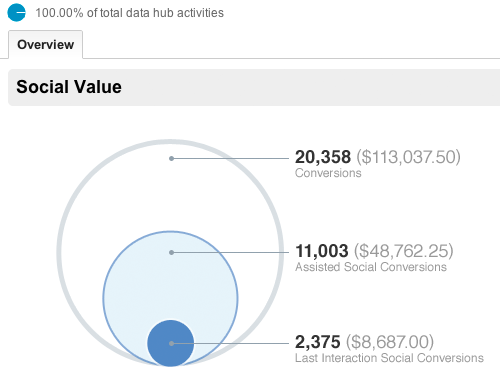Steven Shattuck is a guest contributor for Nonprofit Hub, and is VP of Marketing at Bloomerang. He is a featured contributor to Social Media Today and has been published in Search Engine Journal, Business2Community and the Content Marketing Institute.
_____________
Interpreting and reporting on analytics can be almost as difficult and time consuming as actually planning and deploying the marketing campaigns themselves. To make matters worse, social media campaigns are notoriously hard to track. With so many disparate channels, communities and forms of engagement, it’s hard to know which metrics truly matter and which don’t. Here are a few of the social media metrics that should matter most to nonprofit marketers:
Conversions Are King
It’s likely that nonprofit marketers have a short list of overarching goals: create advocates, generate donations, enlist volunteers. A conversion occurs when one of these goals is met through an online channel. Your social media reporting should be based on when and how often social media activity assists in creating a conversion. Conversion assists are surprisingly easy to track through free tools available to everyone – it just takes a diligent marketer to define goals and track activity.
Google Analytics is a great place to start.
First, create your conversion goals in the “Admin section.” A goal can simply be a visited page. For example, if you’re tracking a campaign that generates social media traffic to a donation landing page, simply add the “Thank You” or “Confirmation” page URL as a goal. This will track how many people reach this page after making a donation (assuming it can only be reached after making a donation). It’s best to track pages that can only be reached after a form is filled out, so that you know you’re tracking true conversions only.
Next, add all of your social profiles to your account. To do this, visit the “Admin” section and select “Social Settings” from the middle column.
Finally, visit the “Social” menu option under “Traffic Sources.” This will list all of the traffic generated by individual social media profiles. You can also see how many conversions were generated as a result of that social media traffic.
Once you begin measuring traffic and conversion assists from each individual social network, you can begin to see which network is creating the most value for you.
Engagement is Nice, But Focus on Sentiment
Engagement metrics are easy to track and report, and often dominant reporting. Number of likes, shares, retweets and +1s are metrics you should be watching, but not necessarily patting yourself on the back about. Remember: If engagement isn’t generating conversions, it amounts to nothing more than vanity metrics. Don’t forget to include direct engagement (one-on-one conversation, such as @ responses and status update comments) in your engagement reports.
Sentiment is a metric that doesn’t have to be valued against conversions. Though it is an intangible metric, it can still give you a sense of how your organization is perceived and how positively people view your brand. It’s your online reputation! Be sure to set up alerts for social media mentions of your brand name. Twilert.com is a great tool for setting up Twitter alerts (be sure to disclude the @ symbol incase someone mentions you without tagging your username). Keep track of how many complaints and praises you receive in order to paint a picture of overall brand sentiment.
Don’t Get Caught Up In Follower Counts
A lot of marketers get excited when they see their follower and fan counts rise. While more followers can create the opportunity for greater reach, followers for the sake of followers should not be a goal or a major highlight of any social media activity report. As with engagement metrics, unless you can draw a comparison between follower growth and an increase in conversions, it’s not worth reporting to your superiors. The worst thing a marketer can hear when presenting a report is “who cares?” and follower growth without ROI typically generates that kind of response.
Social Media Metrics in Order of Importance
1. Conversion assists
2. Traffic from social media
3. Engagement
• Mentions
• Shares
• Comments
• Likes / +1s / favorites
4. Sentiment
5. Followers
Remember, if your social media activity isn’t generating revenue or increasing donor retention, you may want to rethink your strategies.
What social media metrics are you tracking? Did I miss anything? Let me know in the comments below.





.gif)


